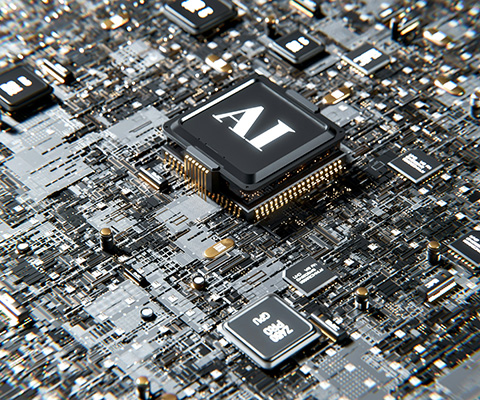How generative AI will impact enterprise sustainability.

By: Nisar Ahamad, Vice President, Head of Industries and Sustainability, Capgemini Engineering
Across industries, generative AI is garnering more attention with each passing week. From powerful data analysis to content personalization at scale, the emerging use cases for this technology are vastly diverse. Businesses are clamoring to be a part of this much touted and multi-faceted ‘boom’, whilst regulators and AI specialists continue to understand the impact and evaluate how to mitigate the risks and ensure careful usage.
Of particular concern in both the private and public sectors is how generative AI might affect sustainability commitments. Like any technology, AI has both positive and negative implications for the environment – though criticism has focused on its significant energy consumption. When compared to other web-based applications, most organizations understand that the power-intensive nature of generative AI has a larger carbon footprint than traditional IT, but research also shows that nearly 80% of these enterprises are conscious of the need to scale sustainably.
In order to fully assess the environmental impact of generative AI, leaders must look at the broader context of AI capabilities, as well as the value of specific applications to sustainability efforts.
The relationship between generative AI and sustainability is multi-faceted. On one hand, there is concern surrounding Gen AI’s reliance on massive quantities of energy to deliver its computational requirements. Capgemini research shows that shows that only 36% of organizations are currently tracking carbon emissions from generative AI use, but more than half are developing guidelines for responsible use, in order to mitigate the associated carbon footprint. As a result, we have developed a tool to assess the financial and environmental impact of these projects, so that clients can make their decisions with all the elements.
Once trained, queries to AI-based systems also tend to have a higher accompanying energy cost. While these impacts may appear jarring at first glance, Gen AI also has the power to mitigate carbon footprints in the long term. And while it is clear that generative AI has an energy cost problem, is that truly the whole story?
Generative AI has gained popularity for several reasons, and one of those is the efficiency with which it completes certain tasks. A single generative AI query may have a larger carbon footprint than a single traditional web query, but in practice, it may take ten traditional queries to achieve the same result. As the predictive capabilities of these large language models improve, this efficiency is likely to increase exponentially, meaning that any potential extra energy cost could be offset.
This rationale around efficiency does not scratch the surface of how AI can be used to streamline processes and optimize resource utilization. At the organizational level, there are very high sustainability expectations of generative AI, including an estimated 9% reduction in carbon footprints within the next three years.
In this sense, the predictive algorithms of generative AI have sustainability built into their core, because they allow businesses and users to reduce carbon emissions by intelligently managing the balance between production and mitigation. Therein lies the business use case – continually increasing efficiency could improve the product, save money, and mitigate climate impact.
These scenarios are more than just theoretical. Across industries, my team works closely with organizations on generative AI to respond to their specific business needs. For example, we recently collaborated with a large pharma company to use transformer models to generate novel medicinal molecules for drug discovery. In the banking sector, we have supported various banks on code conversion in combination with software migration projects, using generative AI to propose translations of software from “old” languages to modern languages.
Beyond efficiency, there are other considerations when evaluating the impact of generative AI. When AI’s power consumption comes from green sources, its energy usage might not be as damaging as it appears. In fact, data centers, where these models are most often run, are some of the largest corporate purchasers of renewable power anywhere in the world. In this way, the data center industry is not just leading by example, it is helping to actively drive decarbonization by underwriting a sizable proportion of a nation’s carbon-free energy.
Sustainability is on the boardroom agenda of nearly every responsible enterprise, meaning that senior leaders are closely following the environmental impact of new innovative technologies such as generative AI. Many organizations have already begun to plan mitigation strategies as part of their Gen AI roadmaps, such as utilizing energy-efficient hardware and optimizing their training algorithms. By establishing sustainability guidelines and making a dedicated effort to be more climate-conscious, net-zero is an integral part of the Gen AI conversation – not an afterthought.
For leaders just beginning their generative AI journey, there are several ways that organizations can ensure this technology is implemented in a responsible and ethical manner, including:
Generative AI is set to impact nearly every industry and drive significant transformation. It is impossible to ignore the potential for positive change and sustainability benefits that makes Gen AI a worthwhile area for research and investment. The business case is compelling, as evidenced by the continued excitement and growth that the technology is generating.
As with many innovative technologies, the early stages are often challenging and require a great deal of improvement to reach their full potential. It is important to note that increased funding and investment in generative AI will create future generations of this technology that are vastly more advanced in output and more sustainable. With responsible approaches and ongoing efforts to improve efficiency, sustainable AI can play a transformative role in addressing environmental challenges and driving a greener future.

In this episode, I sat down with Beejan Giga, Director | Partner and Caleb Emerson, Senior Results Manager at Carpedia International. We discussed the insights behind their recent Industry Today article, “Thinking Three Moves Ahead” and together we explored how manufacturers can plan more strategically, align with their suppliers, and build the operational discipline needed to support intentional, sustainable growth. It was a conversation packed with practical perspectives on navigating a fast-changing industry landscape.